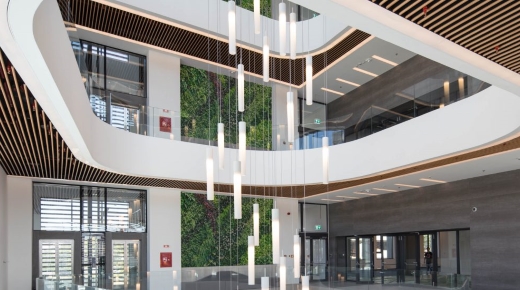Sections
- Services
- Data and insights
- Testing, certification and verification
- Acoustics testing
- Approved certifiers of design Scotland – domestic and non-domestic buildings
- Assessment of indoor environmental quality and ventilation in healthcare buildings
- Concrete and related materials
- Effects of new buildings on TV reception
- Engineering support
- Environmental Product Declaration (EPD) EN 15804
- Environmental Technology Verification
- Fire safety testing
- Heat pump testing
- Indoor environment testing
- ISO 14001
- ISO 45001:2018
- ISO 9001
- Lighting
- Mental Health Product Testing
- Partition wall testing
- Post-tensioning kits
- Pre-cast Reinforced Concrete (Repair Scheme)
- Products for Mental Health Safeguarding (ProMHS)
- Recessed downlights testing
- Reducing potential exposure to nitrous oxide in different settings
- Wind load testing
- Training
- Research & Innovation
- Standards
- Expert witness
An essential element in the development of BRE Global’s standards is open consultation with interested parties from outside BRE.
For more information about Standards Consultation
Open Consultations
We are currently seeking feedback on the following draft standard(s) ahead of the deadline(s) noted. If you have comments, please click on the link to the relevant consultation feedback form, complete and return a copy.
Thank you
LPS 1976 requirements and testing procedures for the LPCB approval and listing of video flame detectors
This standard specifies requirements, test methods and performance criteria for video flame detectors and video flame detection systems. These detectors detect changes in video images characterised by the properties of flames generated during the combustion of carbon-based materials. These detectors are installed in and around buildings as well as in broader applications but are intended to be used as part of fire detection systems.
LPS 1976 is based on the well-established requirements and test methodology of EN 54-10, to set out the requirements specific to the capture and analysis of video images of potential flaming fires, assesses the immunity to false alarms sources relevant to the new technology and provides the basis for regulatory approval of these new types of flame detectors/systems.
These types of detectors are suited to large open spaces at greater distances from the fire in environments in which there may be sources of contamination or causes of false alarms. Examples include challenging environments such as departure lounges, aircraft hangars, oil rigs, waste processing facilities, tunnels and factories. These detectors offer robust false alarm rejection as they can be programmed to reject common false alarm sources.
This standard approaches this technology with performance requirements for video flame detectors and video flame detection systems intended to operate as primary systems, offering comparable levels of protection as other fire detectors to EN 54 standards.
This Loss Prevention Standard allows manufacturers to specify the range of the video flame detector and video flame detection system over which it can detect a flaming fire. The range is tested by measuring the response of these to test fires at minimum and maximum distances, as declared by the manufacturer.
For any questions about the consultation please contact Raman Chagger.
The consultation for LPS 1976 closes on 1st of May 2024. You can access the draft of the standard and its supporting form using the highlighted links.
Closed Consultations
LPS 1673 Requirements and testing procedures
This standard addresses forced entry threats that differ somewhat from those addressed by our existing Loss Prevention Standards LPS 1175 and LPS 2081 as well as other forced entry standards, including:
- ASTM standards E2395, F588, F842, F2781, and F3561.
- EN 1627.
- PAS 24.
Not least, LPS 1673 focusses on the threat of bladed weapons and blunt impact tools being used to commit violent attacks with a complete disregard to the level and extent of noise generated. Furthermore, the scenarios it focusses on typically involve the use of very limited quantities of tools / weapons in a fast acting and highly mobile manner. For this reason, unlike other standards, this standard recognises a product’s ability to resist attack for as little as thirty seconds while those protected by the product seek a more secure safe haven protected by products achieving higher attack ratings in accordance with this standard or LPS 1175.
LPS 1673 defines a multi-digit performance classification system:
- The letters ‘AR’ followed by a full stop (‘.’). This indicates the performance classification attributed to the product is an ‘Attack Rating’. This differentiates the performance classifications attributed in accordance with LPS 1673 from those attributed in accordance with LPS 1175 (forced entry with noise) and LPS 2081 (forced entry by those using stealth).
- Threat level (second element) – Letter (A to D). This corresponds with the tool kit used to evaluate the product’s resistance to forced entry.
- Delay (third element) – Numeric value (30, 60, 120, 180, 240 or 300). This corresponds with the minimum delay (in seconds) achieved by the product when configured to resist forced entry.
The consultation for LPS 1673 has now closed. Thank you to everyone who has participated by submitting comments.


LPS 1048: Issue 6.0
This Standard identifies the evaluation and / or testing practices undertaken by LPCB for the purposes of approval and listing of products and services. LPCB listing and approval of products and services is based on evidence acceptable to LPCB:-
- that the product or service meets the standard;
- that the manufacturer or service provider has staff, processes and systems in place to ensure that the product or service delivered meets the standard
and on:-
- periodic audits of the manufacturer or service provider including testing as appropriate;
- compliance with the contract for LPCB listing and approval including agreement to rectify faults as appropriate;
The consultation for LPS 1048: Issue 6.0 has now closed. Thank you to everyone who has participated by submitting comments.
BREEAM In-Use International
This consultation has now closed. Thank you to all those who have participated. The draft standard is available for review along with a summary document of the proposed changes. The feedback and comments on the proposed changes from BREEAM In-Use Users is important as we seek to broaden BREEAM without increasing it’s complexity, making it more accessible and transparent.
The BREEAM In-Use update takes place at a particularly crucial time. The urgency of addressing the sustainability of our communities and buildings – particularly existing buildings – continues to grow. The BREEAM team are committed to ensuring that BREEAM continues to use the best research and science to set the standard and operate a certification program that delivers value and gives investors, owners and operators the information they need to make better decisions, manage risk and to communicate performance transparently.
We welcome feedback from all clients, users, assessors and stakeholders, and need your support to make the new version the best it can be. With so many sustainability, ESG & resilience challenges facing the real estate market right now, this is the perfect time to be involved! We look forward to hearing from you!

BPS 7014 Standard for Modular Systems for Dwellings
This BRE Product Standard (BPS) 7014 has been developed to provide a route to certification for offsite/modular construction for use as residential buildings.
The Standard sets out performance requirements in a number of technical areas. Some of the requirements are mandatory, such as for fire and structural performance, and are required to demonstrate regulatory compliance. Other performance assessments are voluntary. The requirements have been subject to detailed consultation with the Advanced Manufacturing of Homes Buildings and Infrastructure (AMHBI) project consortium and other industry stakeholders.
The consultation for BPS 7014 Standard for Modular Systems for Dwellings has now closed. Thank you to everyone who has participated by submitting comments.
LPS 1131.
This is a major update to align with the current prEN 12259-12 (and anticipated publication of the full standard), together with current best practice.
This standard specifies LPCB’s certification requirements for single stage and multi-stage centrifugal pumps with mechanical seal or soft packing for use in automatic sprinkler systems conforming to EN 12845:2015 or the LPC Rules for Automatic Sprinkler Installations.
We welcome feedback from clients, users and stakeholders, to enable us to ensure that the revised standard meets the needs of the sector. We look forward to hearing from you!
This consultation has now closed. Thank you to everyone who has participated by submitting comments.

Standards in mental health design
Draft Design Guidance – Consultation
Design Guide for products installed and used within buildings and facilities used for the care of mental health – test methods and performance categorisation criteria.
This first draft of the Design Guide aims to create a means of evaluating products so that fair comparisons can be made, validated and verified.
One of the issues faced by those sourcing products for the mental health environment is understanding the product’s suitability. This document provides testing methodologies for materials, fixtures and hardware that have been specifically designed for use within mental healthcare facilities. It aims to help staff better understand the risks still present in products and create better risk management procedures.
The consultation for Standards in mental health design has now closed. Thank you to everyone who has participated by submitting comments.

CEEQUAL Version 6
A sustainability performance standard against which civil engineering, infrastructure, landscaping and public realm projects in the UK and internationally can be assessed for a CEEQUAL rating.
CEEQUAL Version 6 is the first stage of bringing CEEQUAL into the BREEAM family of schemes. Within this version the primary focus has been on integrating CEEQUAL questions from Version 5 into the BREEAM structure.
This document is a draft technical manual and is intended for use by trained and qualified CEEQUAL Assessors and Verifiers in accordance with the procedural and operational requirements of CEEQUAL to rate an infrastructure project.
The consultation for CEEQUAL Version 6 has now closed and the resulting standard can be downloaded here. Thank you to everyone who has participated by submitting comments.


